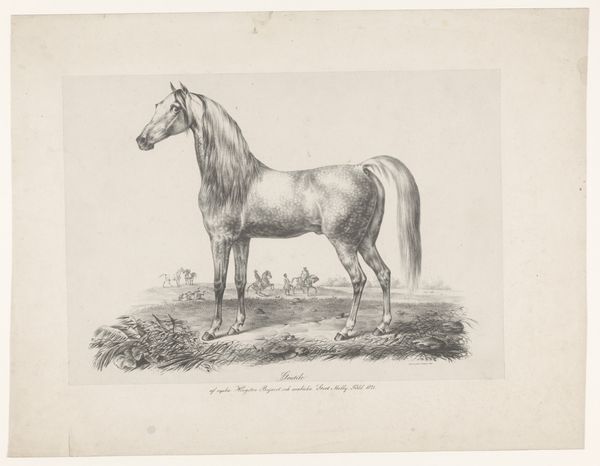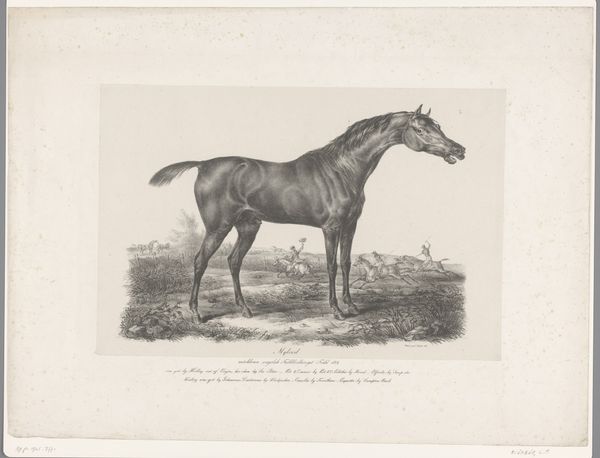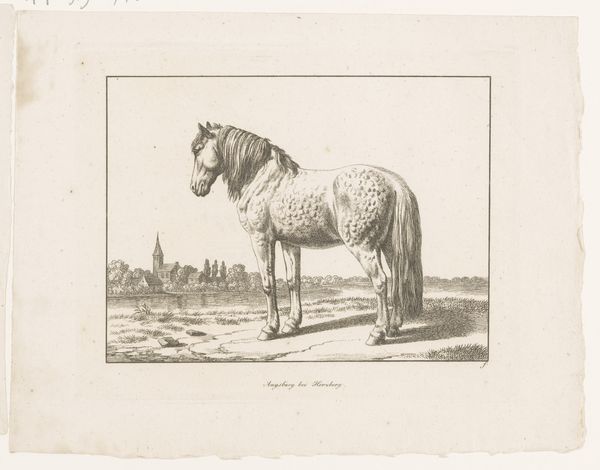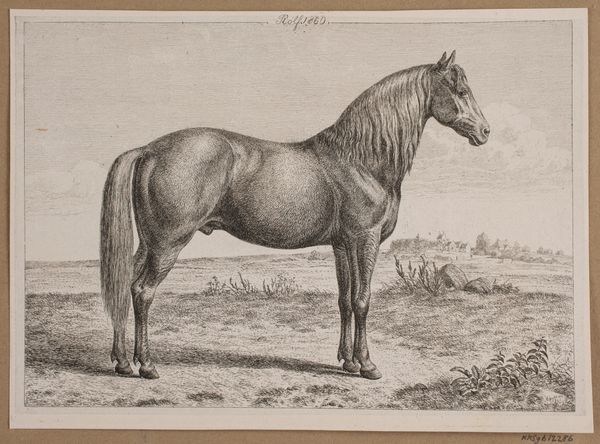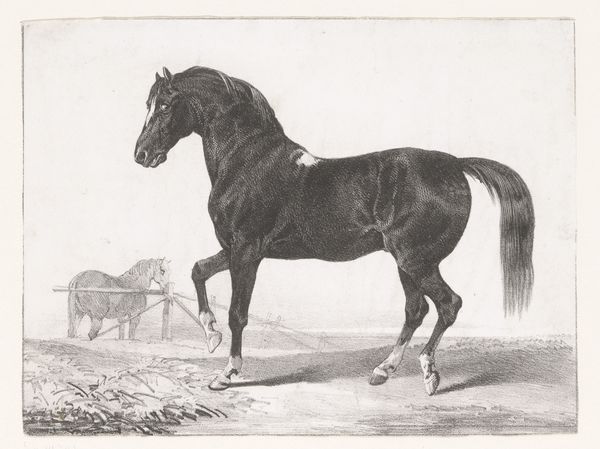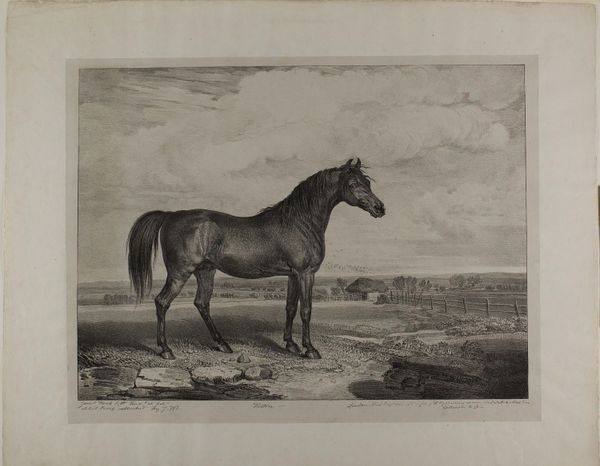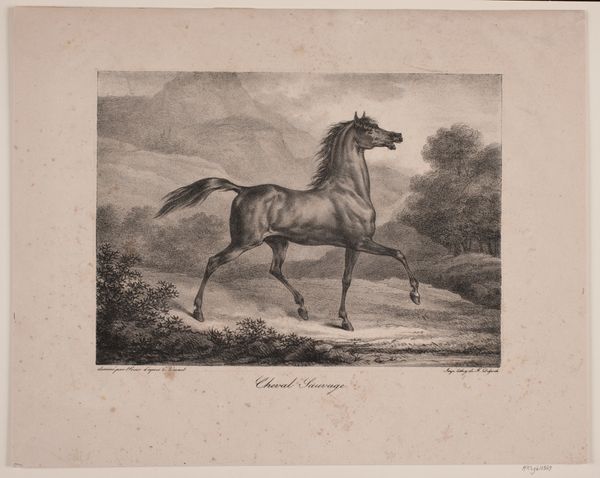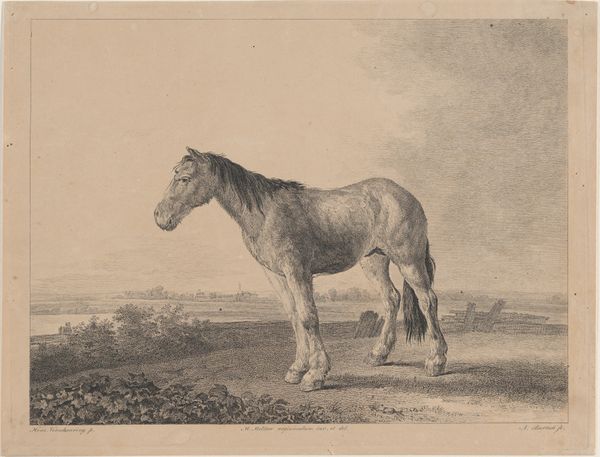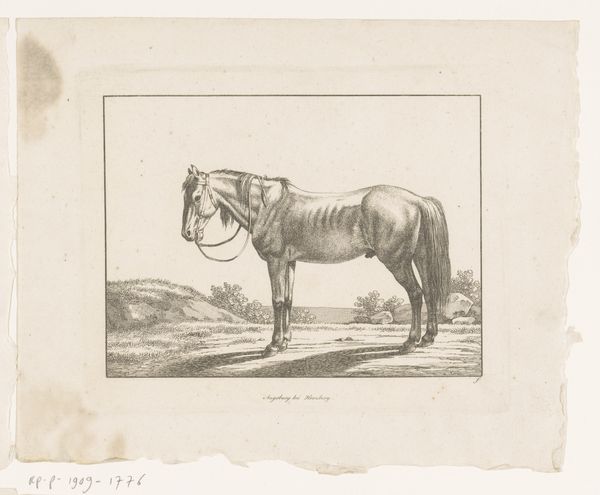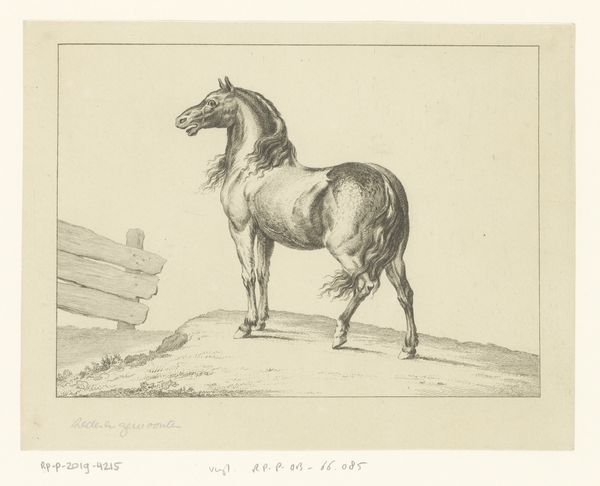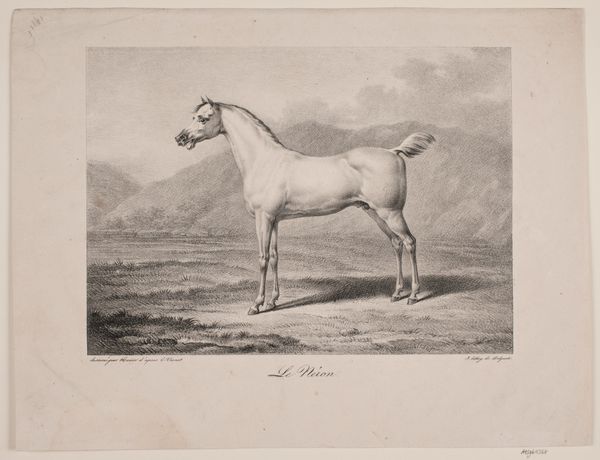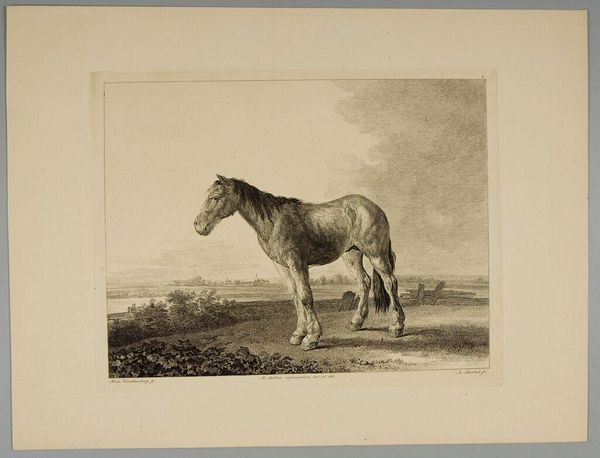
Dimensions: height 199 mm, width 235 mm
Copyright: Rijks Museum: Open Domain
Curator: Here we have "Grauschimmel," which translates to "Gray Mold" or "Gray Horse," a graphite and etching work attributed to Philip Zilcken, sometime between 1867 and 1909. It's currently held in the Rijksmuseum collection. Editor: It possesses a quiet, almost somber quality. The light, tonal gradations created by the pencil work generate an interesting ethereal feel that’s amplified by the subject. Curator: Agreed, though the choice of materials would’ve been commonplace at the time. Zilcken’s access to quality graphite and etching facilities speaks to a certain societal positioning and artistic training. These materials weren't equally available, remember. Editor: Undeniably. But note the way he's manipulated the medium. The almost uniform marks create subtle textural variety, differentiating the animal’s form against the stark atmospheric backdrop. The tonal arrangement contributes to the overall depth and balance. Curator: I’m particularly intrigued by Zilcken's career, largely influenced by the prevailing artistic marketplaces and circles. Prints and etchings afforded more accessible consumption to a wider middle-class audience, broadening his market, shall we say. Editor: Certainly. The image itself exudes a kind of melancholy. There’s a stillness, a contemplative quality… something almost romantic, yet with the touch of realism prevalent during that period. Observe how the lines give shape to the body; they seem calculated and harmonious, while creating interesting effects, like capturing sunlight. Curator: Yes, it straddles a line, doesn't it? High art aspirations interwoven with accessibility dictated by distribution—it mirrors societal structures of the period. The availability of similar engravings also democratized image ownership and dissemination, even within a limited context. Editor: In any event, regardless of production conditions or consumption of similar items in middle-class interiors, the image leaves us with its presence. There's much visual data to unravel from its appearance. Curator: Absolutely. Understanding its materiality reveals insight into the networks and accessibility shaping even what appears to be just an image of a horse. Editor: True, a horse represented elegantly, carefully. Curator: The material history makes us re-think the context in which this elegance appears.
Comments
No comments
Be the first to comment and join the conversation on the ultimate creative platform.
